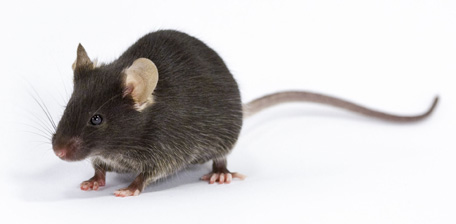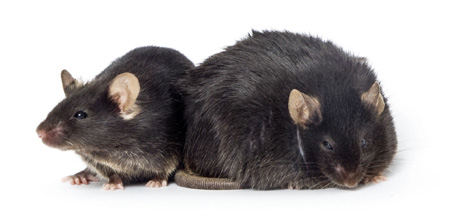Cancer progression depends on a complex network of cancer susceptibility genes, exposure to inducing agents, and/or exogenous environmental conditions. In a ground-breaking study in 2010, a team of researchers from Ohio State and Cornell universities demonstrated that an enriched environment (EE) – more space, more opportunity for physical activity and social interaction, toys, etc. – significantly slows cancer progression in mice (Cao et al. 2010). Led by Dr. Matthew J. During, the team demonstrated that mice living in an EE express increased levels of hypothalamic brain-derived neurotrophic factor (BDNF), lowering leptin levels and suppressing tumor progression. The findings suggest that either genetic or environmental activation of the BDNF/leptin axis might inhibit or slow cancer progression in humans.
EE slows tumor growth

During's team investigated the effects of an EE on tumor progression in several transplantation and genetic mouse models. They found that EE-housed mice from JAX® Mice strain C57BL/6J (B6J, 000664) transplanted with either B16 melanoma or MC38 colon cancer cells develop smaller and later tumors and exhibit significantly less active tumor-proliferating pathways than conventionally caged controls. Likewise, EE-housed mice from JAX® Mice strain C57BL/6J-ApcMin/J (002020), an intestinal/colon cancer model, develop fewer and smaller polyps, exhibit attenuated splenomegaly, and live longer than conventionally caged controls.
EE suppresses tumorigenesis by activating the BDNF/leptin pathway
During's team found that numerous metabolic and genetic changes are associated with EE-housed mouse cancer models. Cancer cell-engrafted mice weigh less, have lower levels of insulin-like growth factor 1 (IGF1), higher levels of adiponectin, adrenal glucocorticoid and the stress hormone corticosterone, and significantly lower levels of serum leptin, a mitogen in many peripheral organs and recently linked to increased risk of prostate cancer, breast cancer and melanoma. Similarly, EE-housed ApcMin mice exhibit significantly lower leptin, higher adiponectin and corticosterone, and lower triglyceride levels than conventionally caged controls.
BDNF mutant mice mimic EE effects

To determine what neurological pathways are affected by an EE, During's team assessed the gene expression pattern in the hypothalamus, a brain region critical in regulating energy balance and neuroendocrine-immune interactions. They found that only one gene, brain-derived neurotrophic factor (Bdnf), is significantly up-regulated in EE-housed mice. BDNF plays an important role in brain development and plasticity, and its expression is greatly influenced by activity and the environment.
During's team found that mice in which gene therapy was used to over-express human BDNF in the hypothalamus weigh significantly less, develop slower and smaller tumors, and exhibit stronger immune responses than controls. Their serum has the same characteristics as that of EE-housed mice – low levels of IGF1 and leptin and high levels of the soluble leptin receptor, adiponectin, and corticosterone. Additionally, their serum slows the growth of cultured B16 melanoma cells. In contrast, whether EE-housed or conventionally caged, mice with hypothalamic knockdown of Bdnf have higher leptin and lower adiponectin levels, gain more weight and develop larger tumors than controls.
A BDNF-leptin signaling pathway is proposed

During and his colleagues wanted to know what part leptin plays in suppressing tumor growth in EE-housed mice. After conducting a series of experiments involving diet-induced B6J mice, leptin-deficient ob/ob mice – B6.V-Lepob/J (000632), the hypothalamic BDNF overexpressing model mentioned above, and syngeneic transplantations of tumor cells, they proposed the following signaling pathway: EE stimulates the hypothalamus, which releases BDNF and induces signal transduction genes, such as Fos and Junb. This signaling stimulates white adipose tissue (and the sympathetic nervous system) to release norepinephrine, which activates beta-adrenergic receptors. These activated receptors mediate the increased expression of adiponectin and the inhibition of leptin, increasing energy consumption, reducing body weight, and ultimately suppressing tumor growth.
The findings by the During team substantiate and mechanistically explain many physicians' observations that healthy and stimulating social and physical environments may help people fight cancer. They also suggest new and potentially very powerful cancer-fighting tools – therapies that activate the BDNF/leptin axis.
Reference
Lei Cao, Xianglan Liu, En-Ju D. Lin, Chuansong Wang, Eugene Y. Choi, Veronique Riban, Benjamin Lin, Matthew J. During. 2010. Environmental and genetic activation of a brain-adipocyte BDNF/leptin axis causes cancer remission and inhibition. Cell 142:52-64.